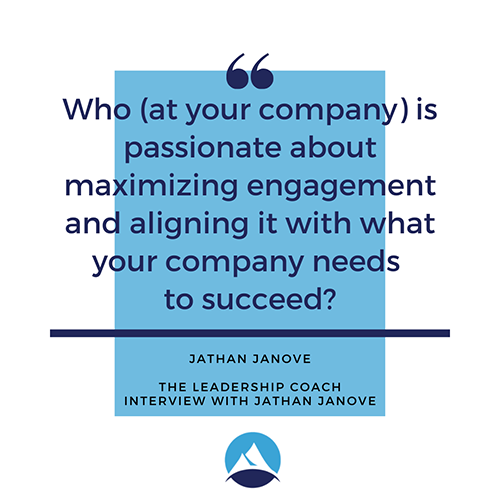Dodging the Recession: 5 Ways To Stay (Or Get) On Top

 In 2010, we were coming out of the Great Recession. A Harvard professor named Ranjay Gulati published an article called Roaring Out of Recession. He looked at the economic slowdowns of 1980, 1990, and 2000 and how they impacted publicly held companies.
In 2010, we were coming out of the Great Recession. A Harvard professor named Ranjay Gulati published an article called Roaring Out of Recession. He looked at the economic slowdowns of 1980, 1990, and 2000 and how they impacted publicly held companies.
Of the 4,700 companies he studied, he found that 17% didn’t survive. Of those who did, about 80% needed three years or more to recover. That’s dismal.
But he also found this: 9% of the companies ended up flourishing. Not only did they grow, but they financially outperformed their industry by about 10%. This wasn’t luck or a happy coincidence. They made different decisions. The decisions they made, anyone can make. That is encouraging.
What did they do differently?
They played a very smart defensive and offensive game. In this article, I want to focus on the defensive game they played, but I’ll introduce both just for the sake of context:
Defensively: They focused on internal, operational efficiencies. (Interestingly, these companies were more likely to retain their employees than others. They found ways to do things better. They didn’t just look to cut payroll.)
Offensively: They kept investing. Specifically in three areas:
- Opportunities and assets that had depreciated due to the economic climate.
- Judicious experiments or R&D.
- Marketing.
None of these offensive strategies paid dividends during the downturn. They were cash outflow. Not inflow. But all positioned them to “rocket out of the recession” when things improved.
But back to defense….
Smart Defense: The Five Low Hanging Fruit In Most Organizations
For most organizations, these are the five largest and lowest hanging fruit. Addressing these results in dramatic surges in growth, productivity and profitability.
1.
Address Conflict: Most studies suggest that between 15% – 20% of a leader’s time at work is spent dealing with conflict. That’s about one day a week. Annually, that is 52 business days or nearly two and a half months.
The cost of conflict rarely shows up on your P&L. It’s invisible. But it is heavily present in lost time, lost opportunities, increased errors, increased turnover and so on.
I sometimes ask executives to calculate the payroll cost of this. Just to make it more real. What is 20% of your payroll costs for all leaders and managers? Most people are staggered when they look at that number. That doesn’t include the rest of your employees.
I don’t suggest that there shouldn’t be conflict. You should have conflict. Conflict, when done well, helps produce better understanding, communication, and decision making.
My question: You are spending heavily to accommodate conflict in your organization. This may be your largest avoidable cost. Are you getting the ROI that kind of investment deserves?
Identify where conflict usually occurs. Don’t avoid it, address it. Work to bring about a healthy resolution. Leaders that do this convert losses into wins.
This is such a big deal, I wrote a book called Conflict and Leadership. It helps leaders turn these situations around. Get a copy for yourself and your team. It’ll help you.
2.
Stop Doing Failure Work: Failure work is the work that is done to correct a problem. While problems occur and mistakes happen:
A) They shouldn’t repeat themselves and
B) We shouldn’t be doing other people’s failure work.
When problems repeat themselves: This is indicative of a deeper issue. Usually, it is either cultural or structural problem. Sometimes a communication issue. But if left unaddressed, at its core, it is a leadership problem. Identify and resolve the roots of the problem.
Don’t do other people’s failure work: If you are a leader and you spend all of your time cleaning up after other people’s messes the problem is probably you. Don’t get sucked into their drama cycles.
Teach and then let people solve and prevent their own problems.
3.
Create or Fix Your Systems or Processes: Organizations grow and operate best when everyone has shared expectations about what and how things are to be done.
One of the most common bottlenecks for organizations trying to grow is that they haven’t developed their systems or processes. These organizations usually started very informally and they tend to struggle with formalization.
It is exactly this formalization of “how things are done” that allows efficiency and growth. Enormous time is wasted and silos are built when everyone has to figure out their own way.
One of the most common growth inhibitors for larger organizations is that their systems or processes are no longer in alignment with nor best serve their values, vision and needs. Your process, policies, manuals, by-laws, etc should serve the larger purpose. Don’t get that backwards. The system is never the purpose.
Build clear, consistent systems. Make sure that every piece of structure clearly and actively serves the larger purpose of the organization. Get rid of or change everything that doesn’t.
4.
Clarify and Align Roles & Responsibilities: One of the primary causes for conflict, redundant or undone work, especially among leadership, is a lack of clarity of definition about roles and responsibilities.
Get clear about this.
- Define or chart the roles your organization needs to meet its goals.
- List the core responsibilities of each role.
That’s it. This isn’t an exercise of making everyone come up with their own 4-page job description. (Which everyone hates, most people never do and it doesn’t produce value.)
It’s a simple matter of saying: “What’s in this role’s bucket of responsibilities?” Make a list. For the most part you already know the answers. You may benefit from help if you are adding new roles. This should be no more than an afternoon exercise for most organizations.
Make sure that whatever you come up with best serves the overall purposes of the organization.
5.
Don’t Have Time-Wasting Meetings: I like meetings because the ones I’m in have value. (Or I change them or stop attending.)
Most leaders spend most (or much) of their time in meetings. Far too many of these meetings are a waste of time. They either don’t have a purpose, or they have too many purposes or they aren’t steered on purpose.
Have a purpose: Every meeting you attend should have a clear (and valuable) purpose or goal. If it doesn’t, and if everyone isn’t in agreement about what that is – it is a time-waster.
Have one purpose: Too many meetings have too full agendas and get too little done. Have one purpose for your meeting. Yes, you can address more than one issue. But walk into every meeting knowing, “What is the one thing we must accomplish during this time?”
Make sure everyone knows it. Make sure that one thing happens. (I know there will be automatic objections to this. But if more meetings even got one thing done – that would be a game-changer for most organizations.)
Steer on purpose: There are many types of meetings and many effective methods for chairing them. But one thing is common – a well run and productive meeting is chaired by someone with both hands on the wheel who drives the meeting towards value.
The best meetings have deliberation and result in decisions. If you are running meetings that don’t include these two elements – there is a high chance that they aren’t producing value.
I’ve chaired or facilitated thousands of meetings. While no one likes a dictator – people do like good drivers. They don’t want their time wasted either. Steer the meeting well. Keep it focused and on purpose. Engage discussion, don’t avoid conflict (but keep it respectful), and make clear decisions with clear responsibilities.
Which fruit to pluck first?
Start with the one that seems like it will have the biggest impact. The main thing is to start.
They are often interrelated – so working on one may impact or require work on another. For example: Conflict avoidant cultures probably have a lot of time-wasting meetings and are unable to have the conversations needed to stop failure work.
So working on any one of those will be work on all three.
The main thing is don’t waste time deciding the “right” place to start. Just start.
Set yourself up to rocket out of this, or any, recession.
Keep well,
Christian
Are you curious about the value of your company? Try my free tool: The Value Builder System
The Value Builder System™ is a 13-minute online questionnaire that evaluates your business on the eight factors that contribute more to its attractiveness and value. These factors are scored on a scale of 1-100. Businesses that score over 80 are likely to command 70%-100% higher value than others. Click here to learn more or get your free Value Builder Score.
Would you like my help for yourself, your team or board to get a clear vision of 2020? Don’t leave it to chance. Give me a call 907-522-7200 or e-mail me.
In my podcast, THE LEADERSHIP COACH, we explore effective, high impact and enjoyable leadership. We talk about personal development and the attributes that all effective leaders possess. I interview other leadership experts who share their knowledge and tips to help you build the confidence to lead and learn the habits of good decision-making.
Now Available! Bonus Interview – The Hard Truth About Soft Skills with Jathan Janove
Opportunities
Did someone send you this article? You can receive it, free, directly from me each week. Click here to sign up. You can unsubscribe at any time. I won’t feel too hurt.
Free Resource: How To Accomplish More Without Doing More is a workbook I created to walk leaders through a process of helping you own your calendar, liberate your time, and still get more done. Download it for free!
Executive and Leadership Coaching: Do you feel overwhelmed? Are you not getting the results you expect from the effort you are putting in? Do you find yourself facing similar challenges time and time again? Would you like to change specific ways of relating or reacting? If you would like to experience predictable, measurable growth Contact me.
Profitable Exit Strategy Workshop: Are you a business owner or partner? Are you over 55? Are you starting to think about exiting your business or active management in the next 3-5 years?
- Are you curious about what your business might be worth?
- Would you like to discover the specific steps you need to take to increase its value and become highly attractive to a buyer?
- Are you planning on handing it over to family or employees and you want to ensure long-term success?
If so, contact me now
Article Categories
Popular articles

Download my free 10-page eBook:
How To Accomplish More Without Doing More:
Eight Proven Strategies To Change Your Life
Discover how to save eight hours during your workweek-even if you're too busy to even think about it. The resource every maxed out executive needs.
